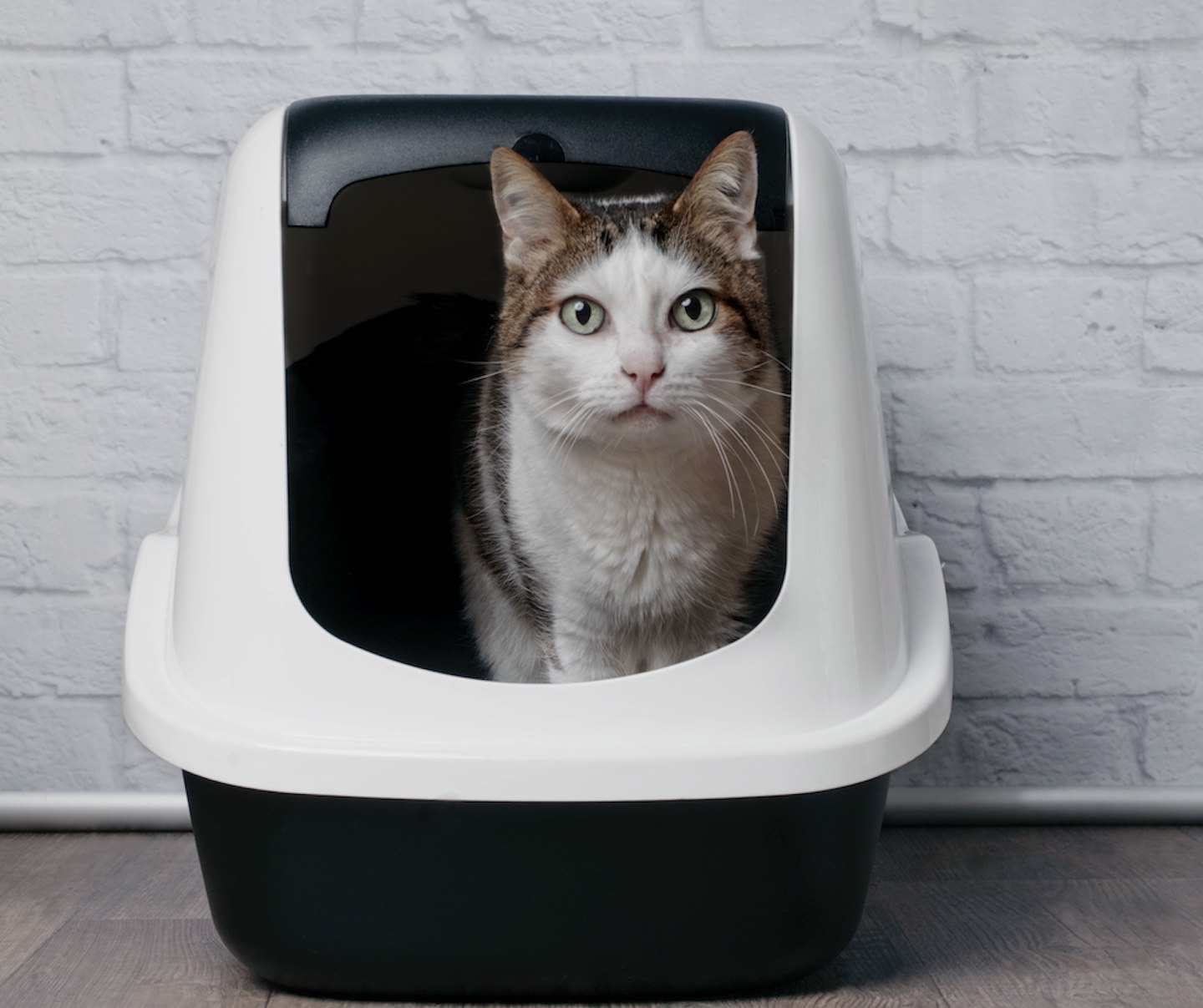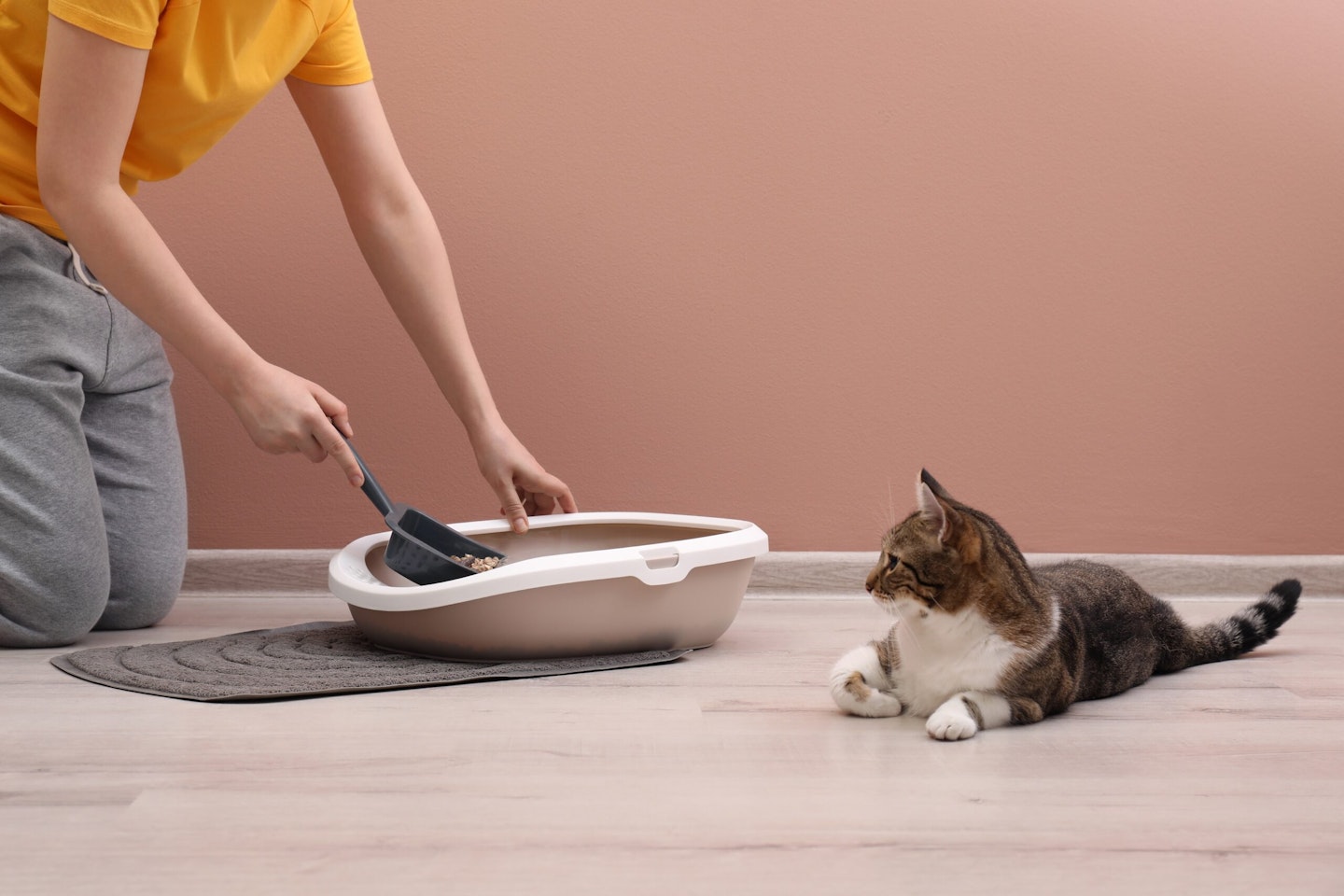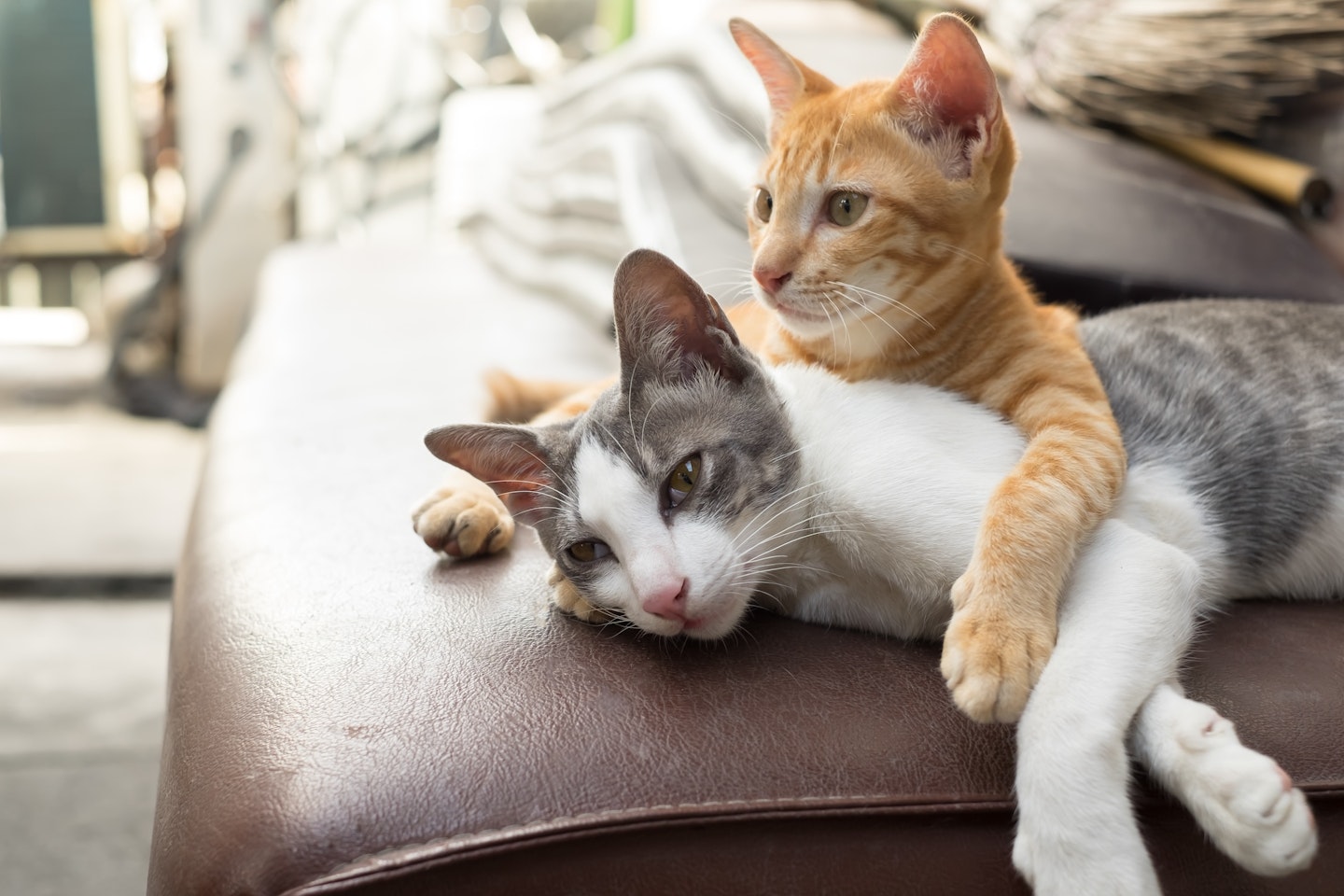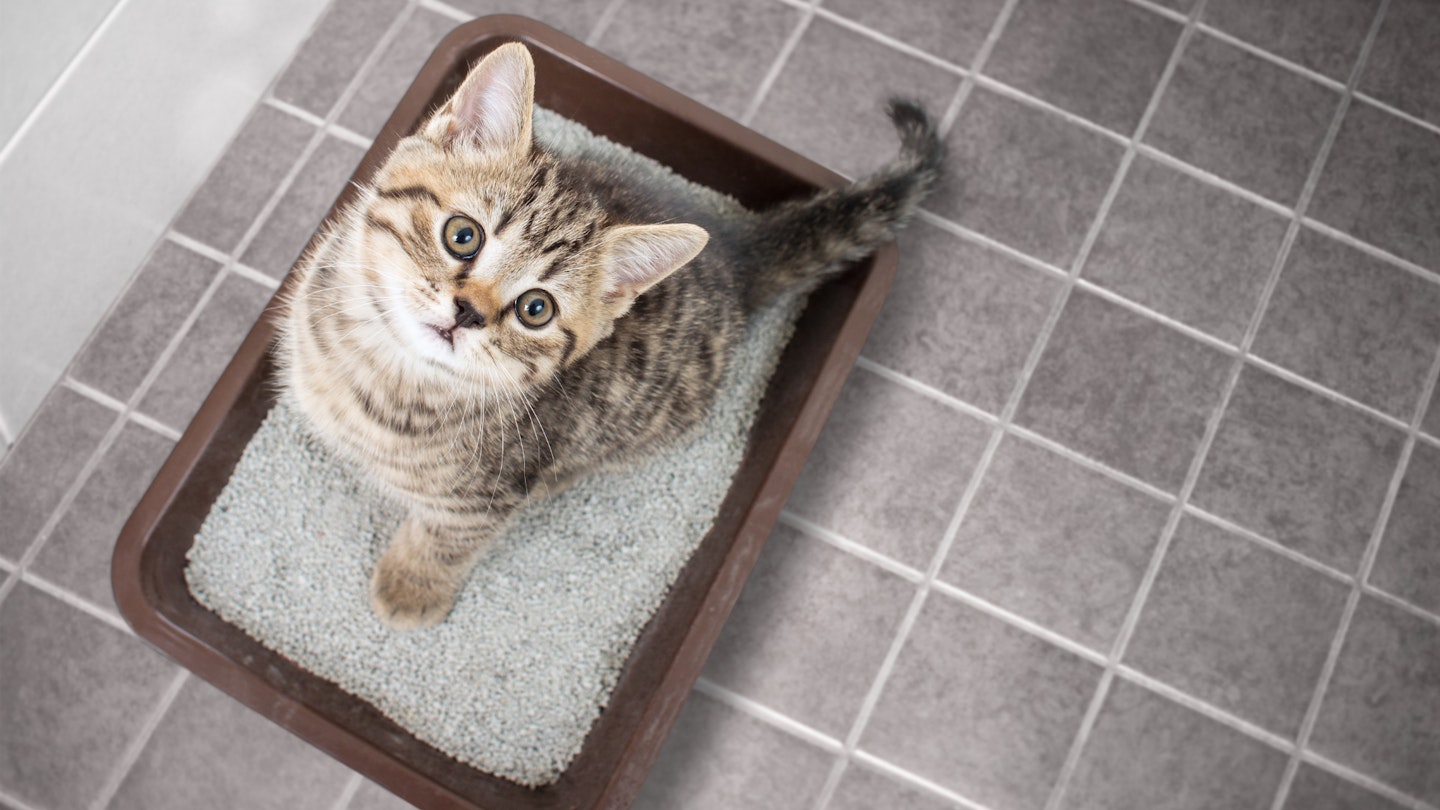Just like us, our feline friends like to have a clean loo, but how often should you change your cat’s litter?
Maintaining a clean litter tray is essential for the well-being of your cat. How often you should change your cat's litter tray depends on factors including the number of cats you have, the type of litter used, whether they're an indoor cat, and your kitty's preferences.
But what are the potential dangers leaving it unattended? Can cats share a litter box? And how do you litter train a cat? We answer all those questions, and more, below.
How often should you change cat litter?
A general guideline is to remove poops and pee using a scoop at least once a day. Ideally, you should do it once in the morning and once in the evening.
In addition to this, you should completely change the litter and clean the tray on a regular basis. For most households, this means completely emptying and cleaning the tray every one to two weeks.
But, if you have multiple cats using the same tray, or if your cat is particularly picky about cleanliness, you may need to change it more frequently, possibly every few days.
Generally, non-clumping litter will need to be changed more regularly than clumping types.
Regular cleaning not only ensures your cat has a comfortable and hygienic place to do their business but also helps prevent odour build-up. It also reduces the risk of bacterial growth that could lead to health issues for both you and your cat.
Always use mild, unscented cleaners when washing the tray. Strong-smelling chemicals can deter your cat from using it.
By staying attentive, you can ensure a clean and pleasant environment for both you and your feline friend!

How do I clean out my cat’s litter tray?
Here's a step-by-step guide on how to clean out a cat's litter tray:
Gather supplies: You will need gloves, a scooper, mild unscented soap, a sponge or brush and a bin bag.
Prepare the area: Choose a well-ventilated area to clean the litter tray. If possible, do it outside or in a bathroom with good ventilation. Lay down some old newspapers or a disposable mat to catch any spills.
Empty the tray: Start by emptying the contents of the litter tray into a bin bag. Use the scooper to remove any solid waste and clumps, disposing of them properly.
Clean the tray: Once empty, wash it thoroughly with warm water and mild, unscented soap. Use a sponge or brush to scrub any stubborn areas. Rinse the tray thoroughly to remove all soap residue.
Dry the tray: After washing and rinsing, dry the litter tray completely with a clean towel or allow it to air dry. Ensure there is no moisture left before adding fresh litter.
Refill with fresh litter: Once the tray is dry, add a layer of fresh litter according to the manufacturer's recommendations.
Dispose of waste properly: Tie up the bin bag containing the used litter securely and dispose of it in an outdoor bin.
Wash your hands: Remove your gloves and wash your hands thoroughly with soap and water to prevent the spread of bacteria.

Where should you place a cat’s litter box?
Cats like privacy, so place their litter tray in a quiet area of your house.
Some prefer a covered litter tray – and don’t disturb your cat while they're doing their business!
What type of cat litter is best?
The best cat litter depends on your cat's preferences, your budget, and your environmental concerns.
Clumping clay litter is popular for its absorbency and ease of cleaning.
However, natural litters made from materials like corn, wheat, or recycled paper offer eco-friendly alternatives with good odour control.
Meanwhile, crystal litter provides excellent odour absorption.
If you’re keeping your litter tray clean, but your cat is avoiding it, try gradually changing the litter you use.
Can cats share a litter box?
If you’re in a multiple cat house, you should have at least one litter tray for each cat – and ideally one extra. That rule also applies for food and water bowls, fountains and beds. This ensures every cat has their own space and eliminates competition for them.
Your cats may use the same tray, but this should be your kitty’s choice, and they should always have an alternative option. If your cats are forced to share one try, they may avoid using it or even become aggressive with one another.
Finally, you should provide your cat with a litter tray even if they tend to toilet outside. This is because they may not always feel comfortable going outside (for example, if there are other cats in the area or it is raining).

How can I litter train my cat?
Litter training a cat involves patience and consistency.
Start by placing the litter box in a quiet, accessible location.
Introduce your cat to the box by gently placing them inside after meals or naps.
Encourage them to dig in the litter with their paws.
If accidents occur, clean them promptly. Reward your cat with praise or treats when they use the litter box correctly. Avoid punishment for accidents, as it can create anxiety.
With time and positive reinforcement, most cats learn to use the litter tray reliably.
Why is my cat not using their litter tray?
There are several reasons why a cat might not use their litter tray:
Dirty litter tray: Cats are naturally clean animals and may avoid using a dirty litter box. Ensure the litter box is cleaned regularly.
Wrong litter type: Cats have preferences for litter texture and scent. If the litter is uncomfortable or has a strong scent, your cat may avoid using it. Experiment with different types of litter to find one your cat prefers.
Location: Cats may be reluctant to use a litter tray placed in a noisy or high-traffic area. Choose a quiet and easily accessible location.
Medical problems: Urinary tract infections, bladder stones, or other medical issues can cause discomfort or pain while urinating, leading to litter box avoidance. Consult with your vet if you suspect a medical issue.
Stress or anxiety: Changes in the environment, such as moving to a new home or the introduction of a new pet, can cause stress and result in toileting problems. Provide a calm environment for your kitty and consider using pheromone diffusers to help reduce stress.
Litter tray size: If the litter box is too small or enclosed, your cat may feel cramped or uncomfortable using it. Ensure it’s spacious enough for your cat to comfortably turn around and dig.
Surroundings: Cats may avoid using a litter box if the surrounding area is dirty or cluttered.
If problems persist, consult your vet or an animal behaviourist for further guidance.
Joe Brothwell is editor of Take a Break Pets and adores all creatures great and small. Despite being a doting cat dad to Winnie, she continues to be aloof!
